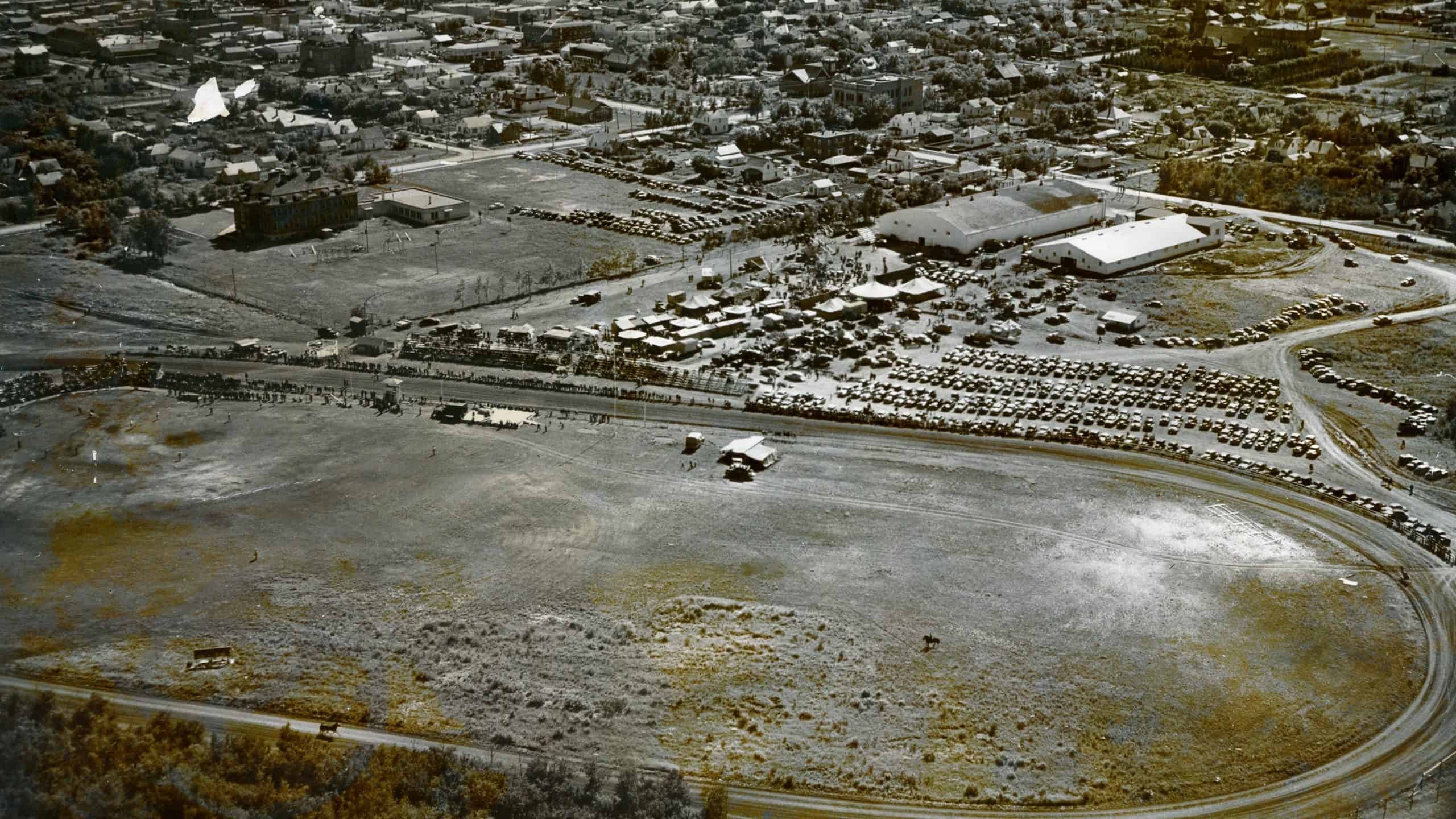A 1948 aerial photograph of the fairgrounds located north of Highway #5 and east of Highway #20 behind the Public School.
The larger long white building in the photo was the Leo Parker Arena and the smaller long white building beside it was the Memorial Building which housed the indoor commercial displays at the fair.
The “Show Window” of the Farm in the Humboldt District
The Annual Fair put on by the Humboldt Agricultural Society brought thousands of people to Humboldt and was the most memorable event of the year for many in the district. It was a jam-packed summer extravaganza of exhibits, competition, horse racing, tournaments, fireworks, a grandstand and a thrilling midway.
“Yes, the Agricultural Fair is truly the “show window” of the farms and homes in the Humboldt District. For here are shown the finest cattle, sheep, swine and horses; the results of studied grain growing; the tastiest baking, cooking and canning; the best needlework, home crafts and schoolwork of the district.”
– The Humboldt Agricultural Society Annual Fair 1954 Prize List booklet
“An unqualified success”
Two years after the community of Humboldt was established as a town, an agricultural society was formed and the first fair was held on September 24, 1909. This landmark event was officially opened by the Honourable W. Motherwell, Federal Minister of Agriculture and was touted by the Humboldt Journal as being an “unqualified success”.
Livestock producers were invited to exhibit purebred stallions, heavy draft mares, foals, cattle, sheep and poultry. There were also prize categories for grains and seeds, roots and vegetables and dairy produce.
In the category of “Domestic Manufacture” one could enter homemade breads, jellies, preserved fruit, pickles, floor mats, quilts and knitting. However, if your skills lay in the making of, say, tea-cozies and embroidered toilet seat covers – not to worry! You could enter your creations in the category of “Ladies and Artists’ Fancy Work” along with handkerchiefs, paintings on satin and pyrography on wood.
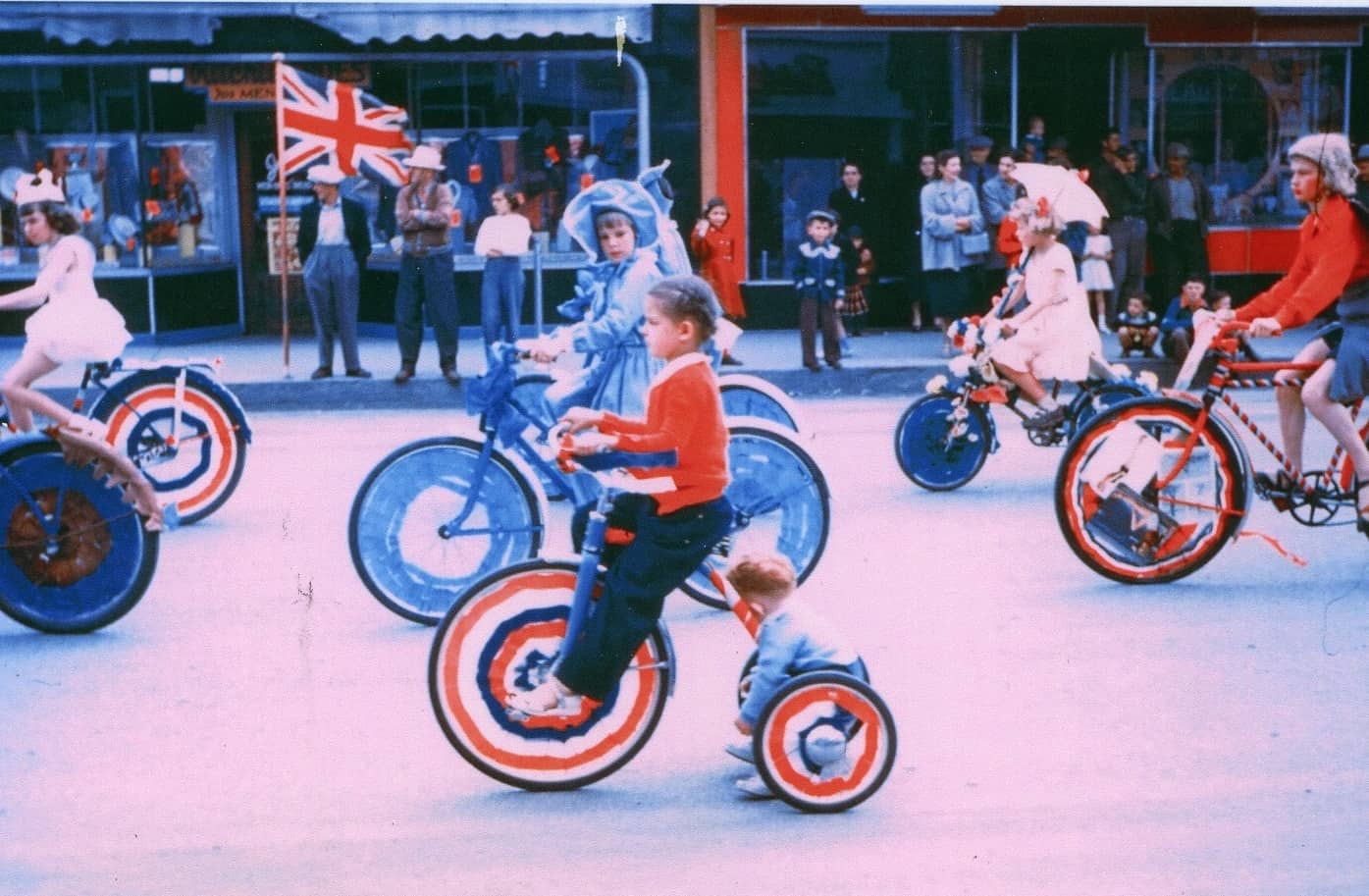
Children riding decorated bicycles and tricycles, dressed up in costumes as part of the parade on July 6, 1954
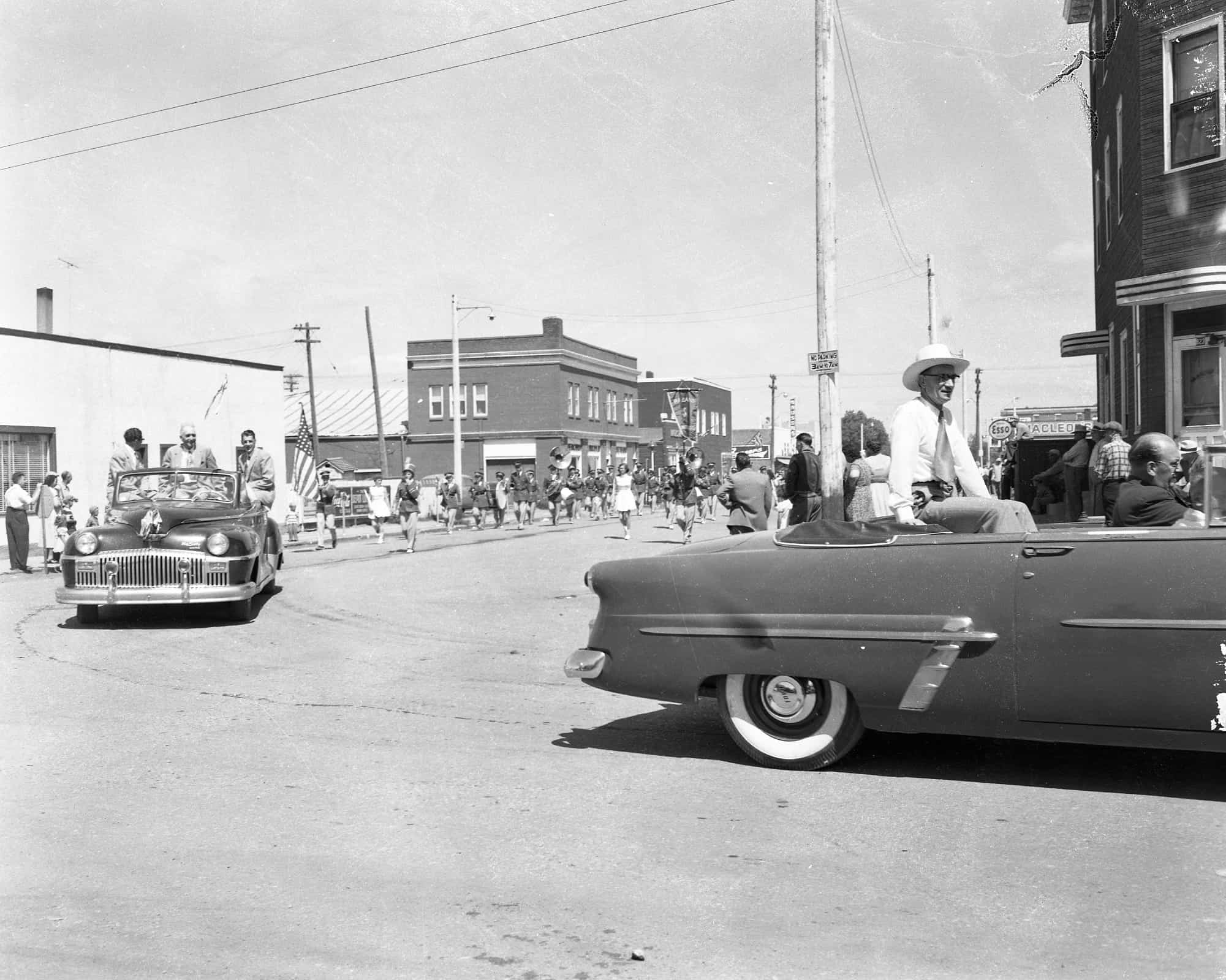
The Traveller’s Parade at Ninth Street and Fifth Avenue on July 6, 1954.
The 1952 Ford convertible in the foreground is being driven by Len Kommes carrying the Traveller’s president Reuben Olson.
The car following behind it is a 1947 Dodge DeSoto with Carl Schenn, President of the Humboldt Agricultural Society (perched on the right), Mayor B.T. Laskin (perched on the left) and the Honourable J.W.Burton, Provincial Secretary and MLA for Humboldt (perched in the centre). Burton declared the official opening of the fair later that evening at the grandstand.
Following the DeSoto is the 45 member Ray High School Band from Ray, North Dakota – note the American flag leading the march!
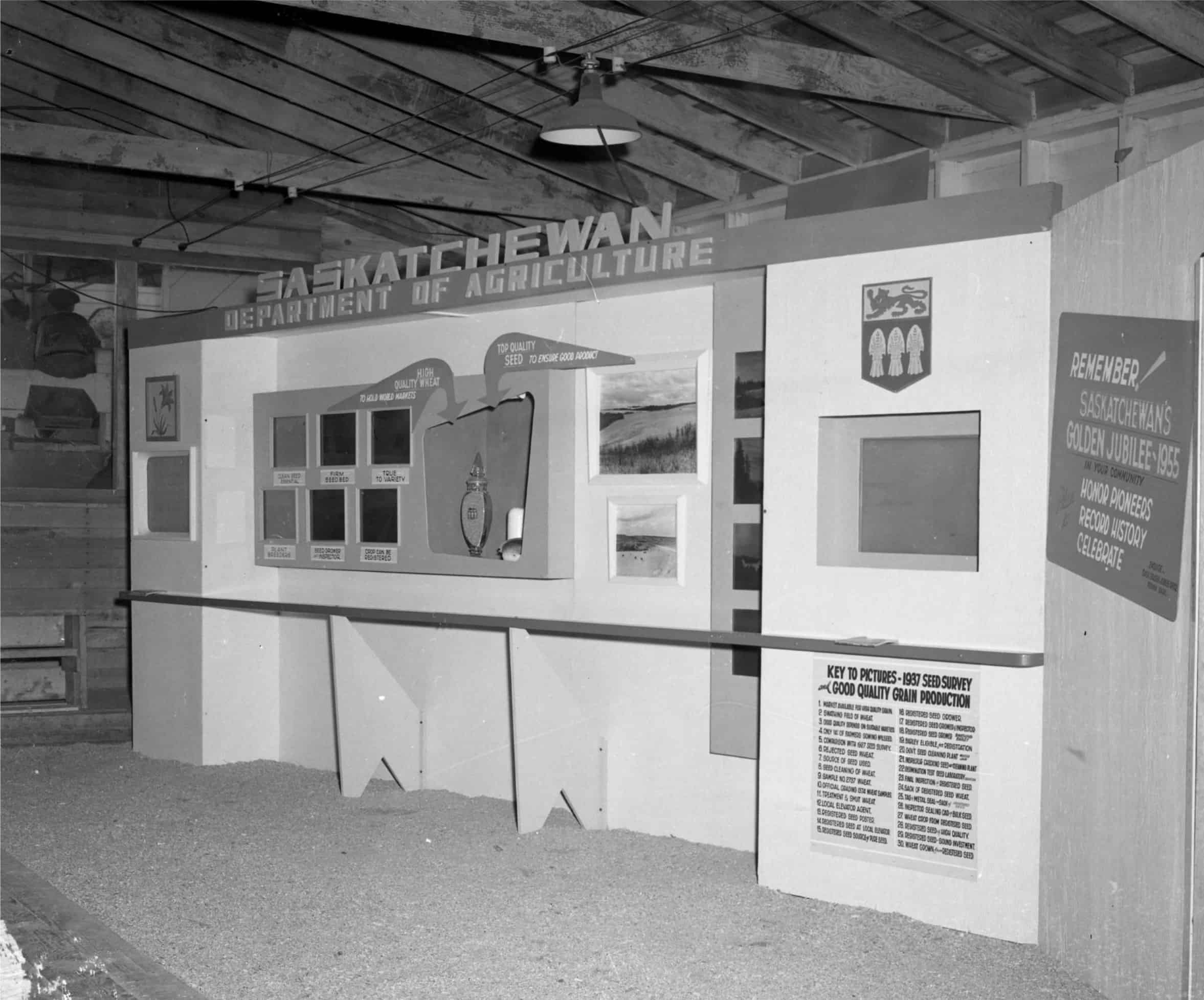
One of the exhibits in the Commercial Display area set up inside the Memorial Building (which was the curling rink in the winter months) showcased Saskatchewan’s Department of Agriculture. It was designed and built by E.W. McKenzie for the Royal Winter Fair at Toronto. As Humboldt was designated as a class “C” fair, it was quite a mark of distinction to have this exhibit on display, as it usually only travelled with class “A” or “B” fairs.
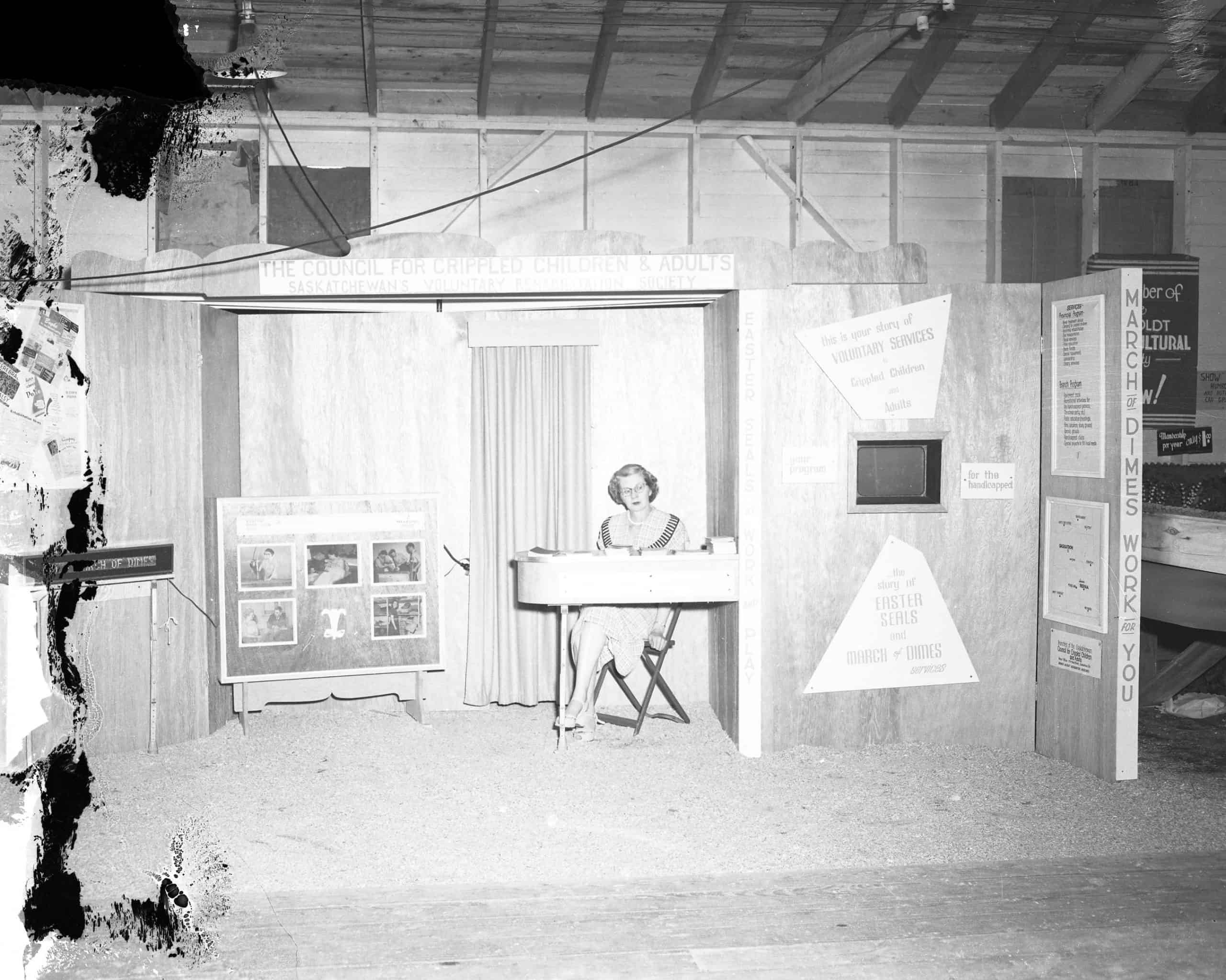
Next to the Department of Agriculture exhibit was this display illustrating how the funds raised from the March of Dimes and Easter Seal campaigns were used in the community. Seated, at the ready to answer questions, was Mrs. I. Nelson, administrative assistant to the Council for Crippled Children and Adults. This display was also a class “B” display, so quite a novelty at the Humboldt fair.
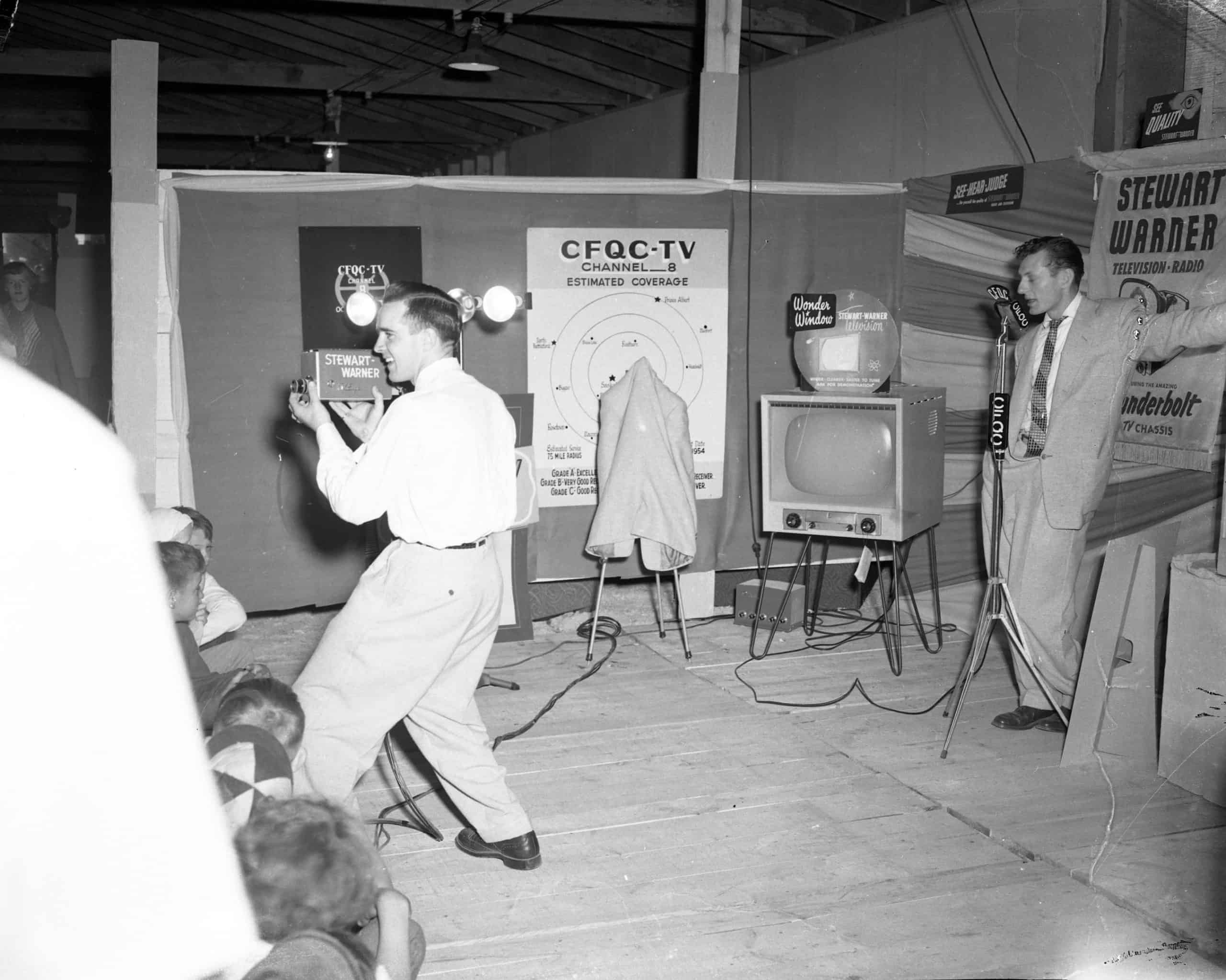
This was one of the most exciting exhibits at the fair in 1954. CFQC Saskatoon was only weeks away from beginning their television broadcast, and Humboldt fell within the range for good reception and was eagerly awaiting the new programming. Orval Kurtland (holding the camera) and Laurie Korchin (at the microphone) of CFQC Saskatoon were animatedly demonstrating the wonders of television by filming the crowds gathered with a handheld camera that instantly “televised” them on the monitor or “Wonder Window” to the delight of the gathered spectators.

